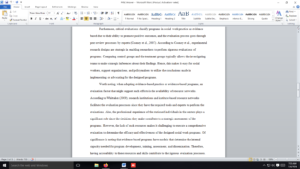Advancing improvements in health care
Use 3 APA citation references, within 5 years with nursing content for this discussion.
The EBP process is a powerful way of advancing improvements in health care. Identify three strategies that you will now incorporate into your practice based on this course. Explain your rationale.
Answer preview
Some of the strategies that I will incorporate in the geriatric care are as follows. I will advocate for the installation of bed alarms to reduce number falls, especially in hospitals or nursing homes. Bed alarms will alert the nurses if an elderly patient attempts to leave from their beds without professional assistance (Gavaller, Gavaller,& Oh, 2019). They improve the nursing staff response rate and reduce the number of falls or fall-related injuries in the facility. However, bed alarms may be ineffective if nurses fail to respond in time. The second strategy is the implementation of hourly rounds. In this strategy, nurses are encouraged to move around geriatric wards or rooms regularly. It allows nurses to reduce the number of falls in the hospitals as nurses will inspect the safety of elderly patients and take corrective measures if some of them are in danger. The last strategy is educating nurses. According to Cuttler Barr-Walker, & Cuttler (2017), nurse education critical in reducing geriatric falls. It equips nurses with the knowledge and skills needed to provide quality and safe care to elderly patients.
[404 Words]
Advancing improvements in health care






